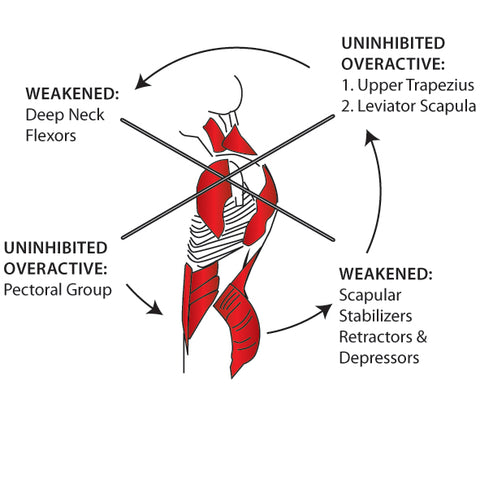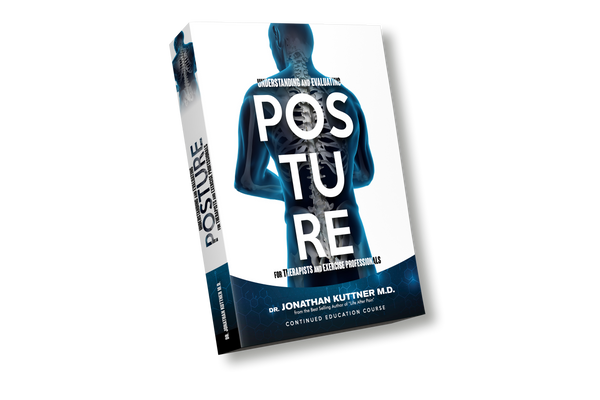Postural Trigger Points - Back, Shoulder and Neck Pain
Upper Crossed Syndrome Explained
Postural muscles tend to have a greater percentage of Type 1 fibers. This characteristic may lead to a more resistant type of trigger point.
The majority of your clients may have occupations that involve prolonged sitting, often at a computer screen, and increased use of mobile devices and tablets.
Ergonomics is a booming industry, focusing on the interactions of people and their working environments; however, not all workplaces can afford to implement proper ergonomic interventions.
Long and monotonous days spent in front of a computer screen often lead to chronic and maladapted postures, which in turn may lead to trigger points.
Over time, these trigger points make their host muscles shorter and less efficient. These "postural" trigger points may be responsible for up to 95% of common back and shoulder pain disorders.
Wherever possible, it is essential to identify the client's postural abnormalities, as shown in the video on this page.

Trigger Points and Posture
When you talk with your clients about the importance of posture and trigger points, they will usually appreciate the advice, and start to schedule for more frequent massage, trigger point and bodywork sessions ... and that helps them to be healthier and happier!
Trigger points are common in the following postural structures: upper trapezius, levator scapulae, sternocleidomastoideus (SCM), erector spinae, musculoligamentous apparatus of the lumbar spine, gluteus medius, and gastrocnemius/soleus complex.
UNDERSTANDING AND EVALUATING POSTURE
NAT PRO SERIES COURSE

Click for Online Course Details
Useful Links on This Website
Find a Trigger Point Professional in your area
Dry Needling for Trigger Points
Certify as a Trigger Point Therapist
This trigger point therapy blog is intended to be used for information purposes only and is not intended to be used for medical diagnosis or treatment or to substitute for a medical diagnosis and/or treatment rendered or prescribed by a physician or competent healthcare professional. This information is designed as educational material, but should not be taken as a recommendation for treatment of any particular person or patient. Always consult your physician if you think you need treatment or if you feel unwell.
About Niel Asher Education
Niel Asher Education (NAT Global Campus) is a globally recognised provider of high-quality professional learning for hands-on health and movement practitioners. Through an extensive catalogue of expert-led online courses, NAT delivers continuing education for massage therapists, supporting both newly qualified and highly experienced professionals with practical, clinically relevant training designed for real-world practice.
Beyond massage therapy, Niel Asher Education offers comprehensive continuing education for physical therapists, continuing education for athletic trainers, continuing education for chiropractors, and continuing education for rehabilitation professionals working across a wide range of clinical, sports, and wellness environments. Courses span manual therapy, movement, rehabilitation, pain management, integrative therapies, and practitioner self-care, with content presented by respected educators and clinicians from around the world.
Known for its high production values and practitioner-focused approach, Niel Asher Education emphasises clarity, practical application, and professional integrity. Its online learning model allows practitioners to study at their own pace while earning recognised certificates and maintaining ongoing professional development requirements, making continuing education accessible regardless of location or schedule.
Through partnerships with leading educational platforms and organisations worldwide, Niel Asher Education continues to expand access to trusted, high-quality continuing education for massage therapists, continuing education for physical therapists, continuing education for athletic trainers, continuing education for chiropractors, and continuing education for rehabilitation professionals, supporting lifelong learning and professional excellence across the global therapy community.

Continuing Professional Education
Looking for Massage Therapy CEUs, PT and ATC continuing education, chiropractic CE, or advanced manual therapy training? Explore our evidence-based online courses designed for hands-on professionals.


















